cross-posted from: https://natur.23.nu/post/12050
I wanted to park my bikes - or depending on the Season - my Renault Twizy somewhat protected and easy accessible.
After adjusting the yard fence to form a pocket I put a frame aluminium profiles on top. On top of that is a second frame which is angled at 10 degrees and on that are the solar panels.
10 degrees seem to be a viable compromise between self cleaning, sun capture, construction height and openings to the elements on the side.
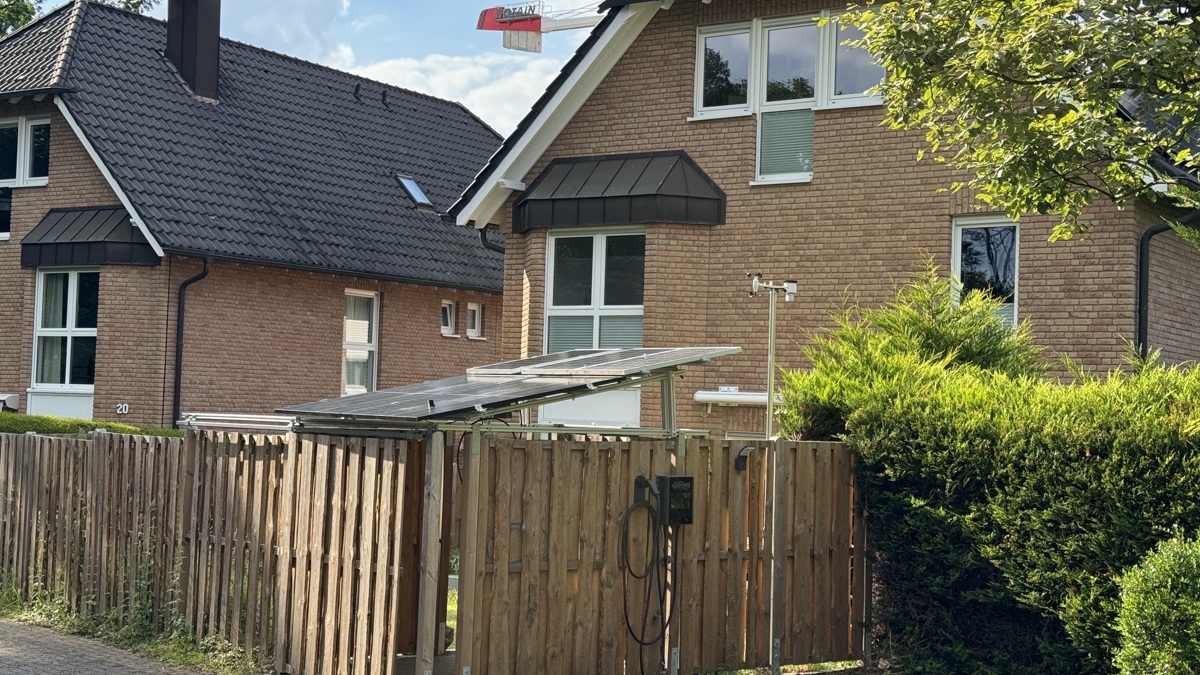
It was much more challenging than i thought to find solar modules with a form factor fitting the shed.
4 Standard modules where far to big. So I choose two modern 410 Wp modules and 3 130 Wp “camping” modules.
I got two 600 W dyne (“Bosswerk”) Micro-inverters cheap, because everybody want’s 800 W now and they have a regulatory issue with a missing relay.
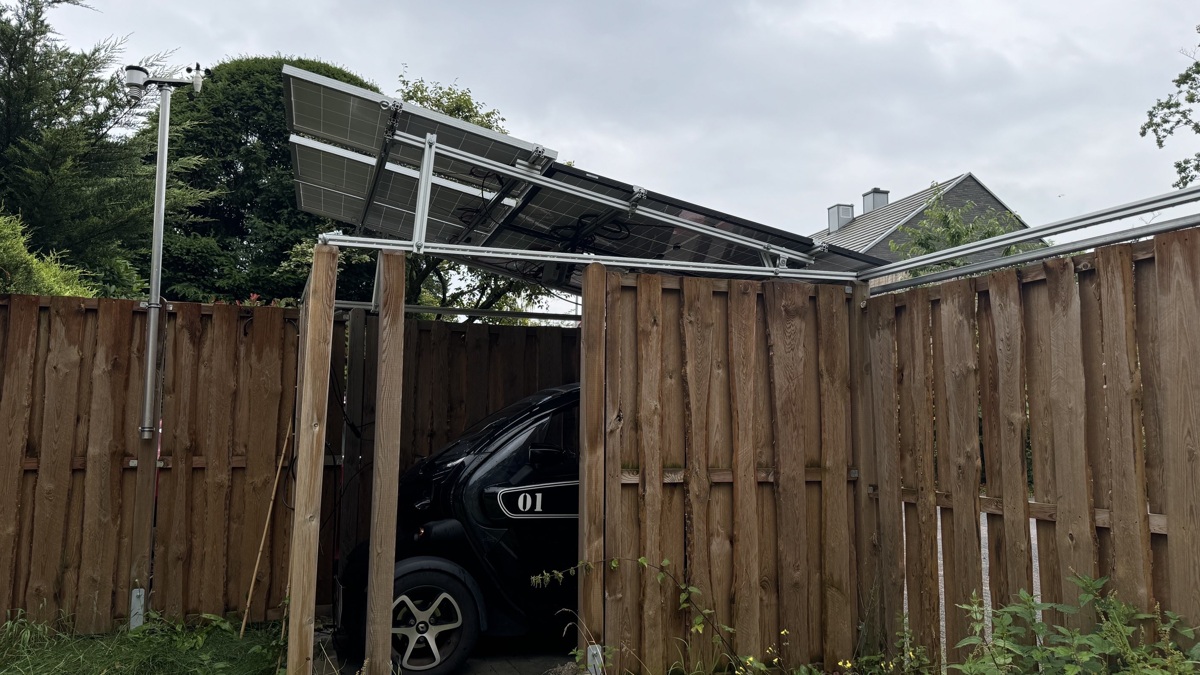
The 130 kWp panels are cabled serially but still seem to have issues getting enough voltage to start the inverter in the morning.
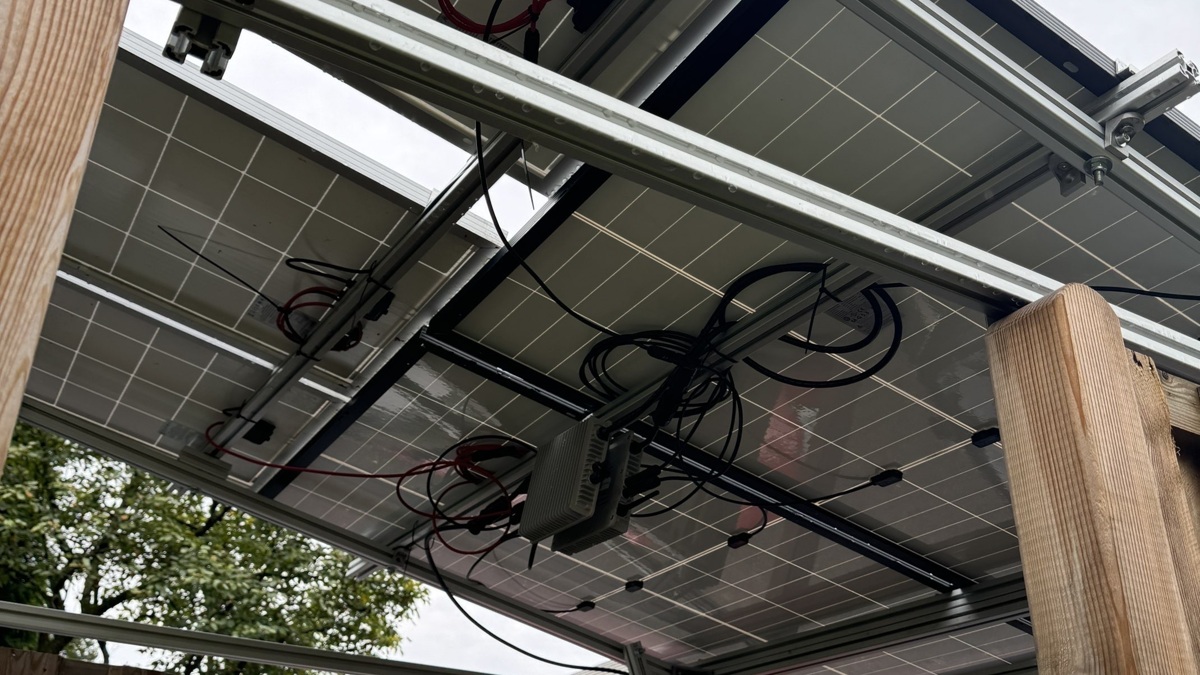
I’m happy with the project. Things in the shed are getting much less wet during rain und not baking hot during sunshine.
I might close the gaps between the panels obe day but that is low priority- the thing was never meant to be totally watertight.
I also like it being some kind of Solarpunk landmark in our street.

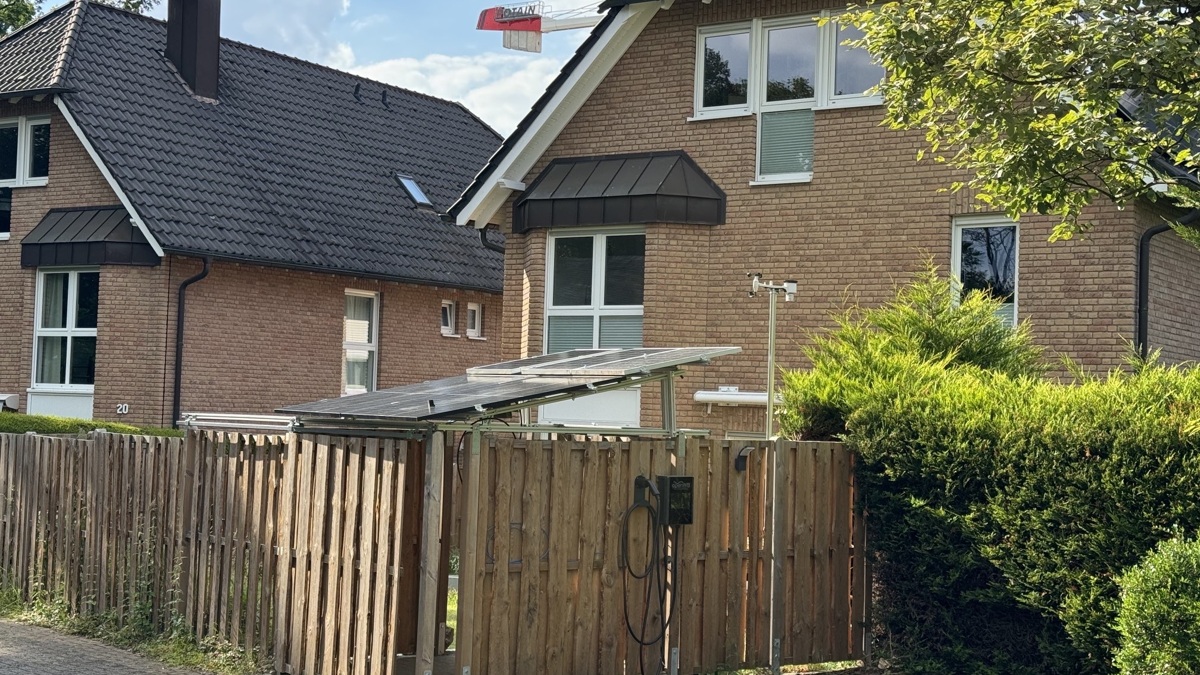
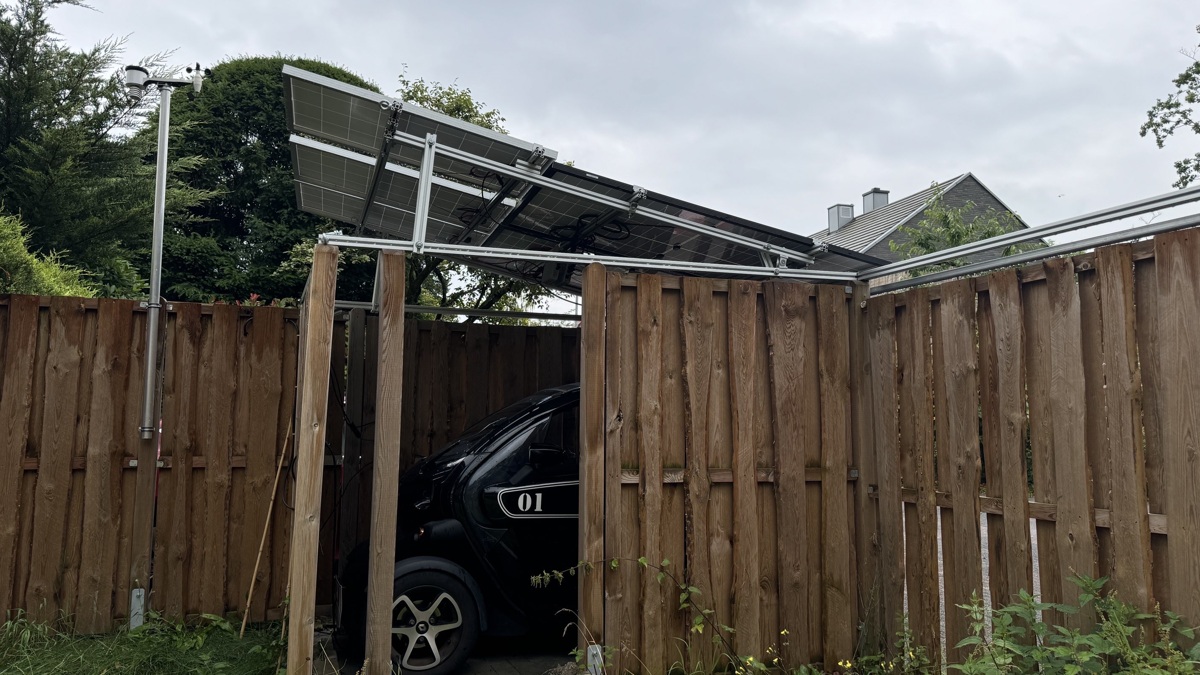
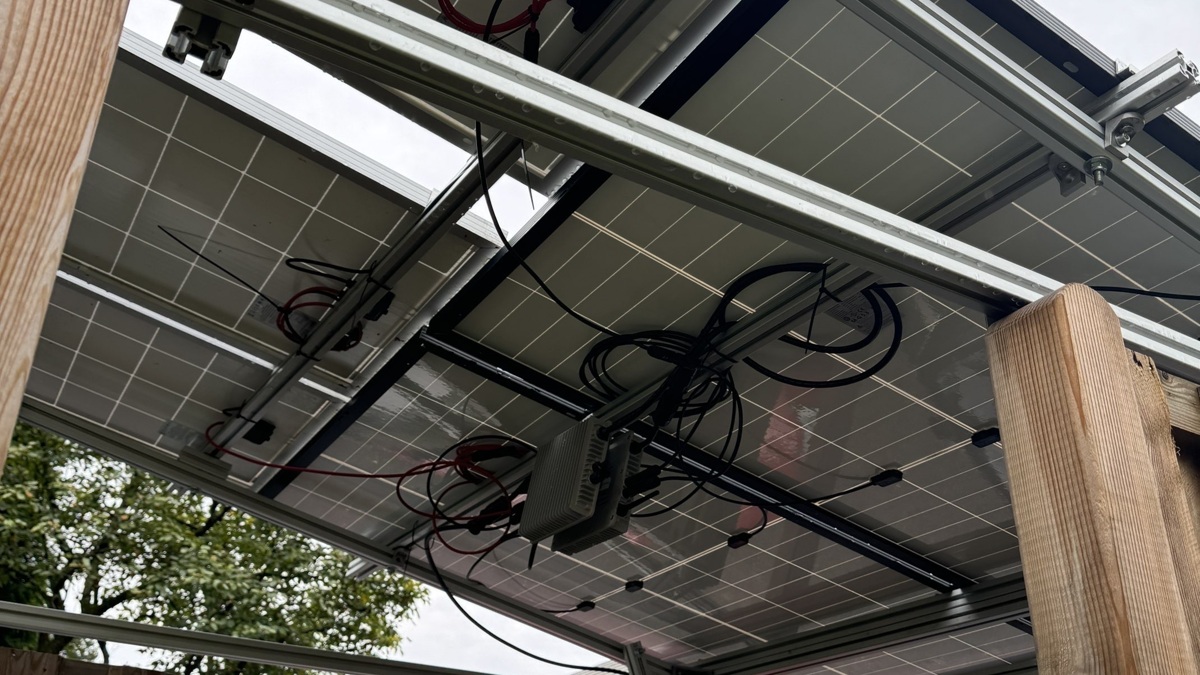
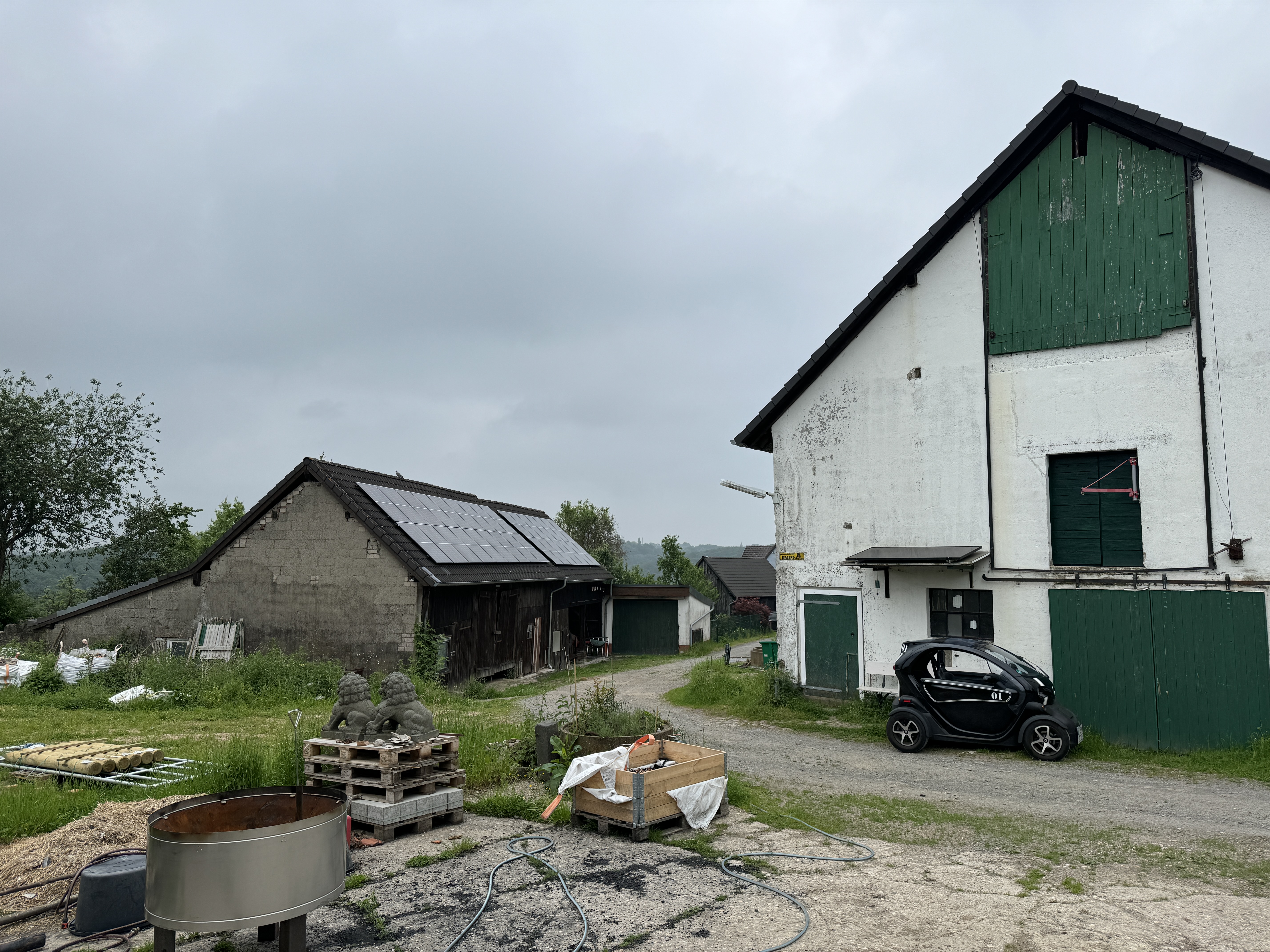
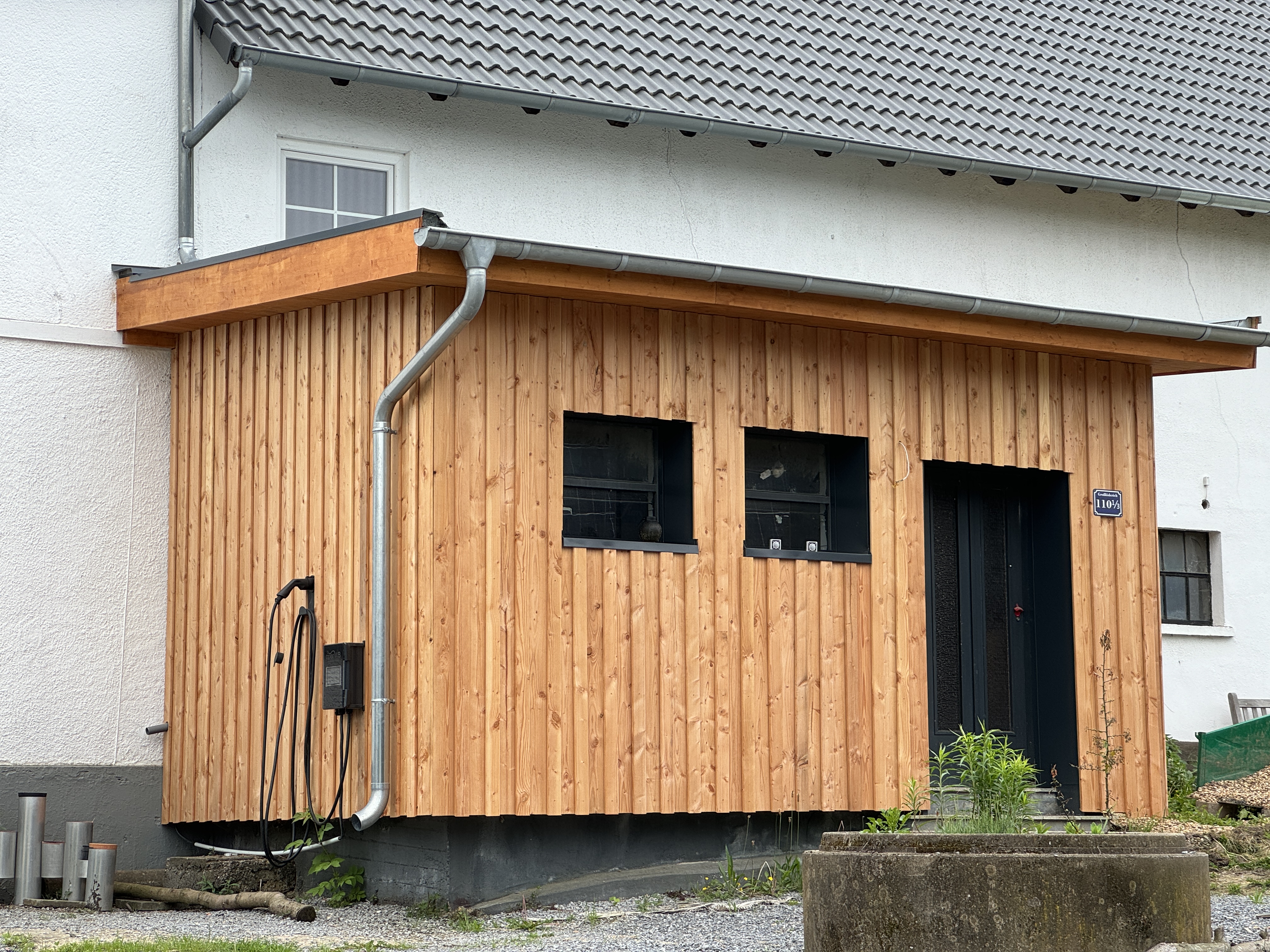

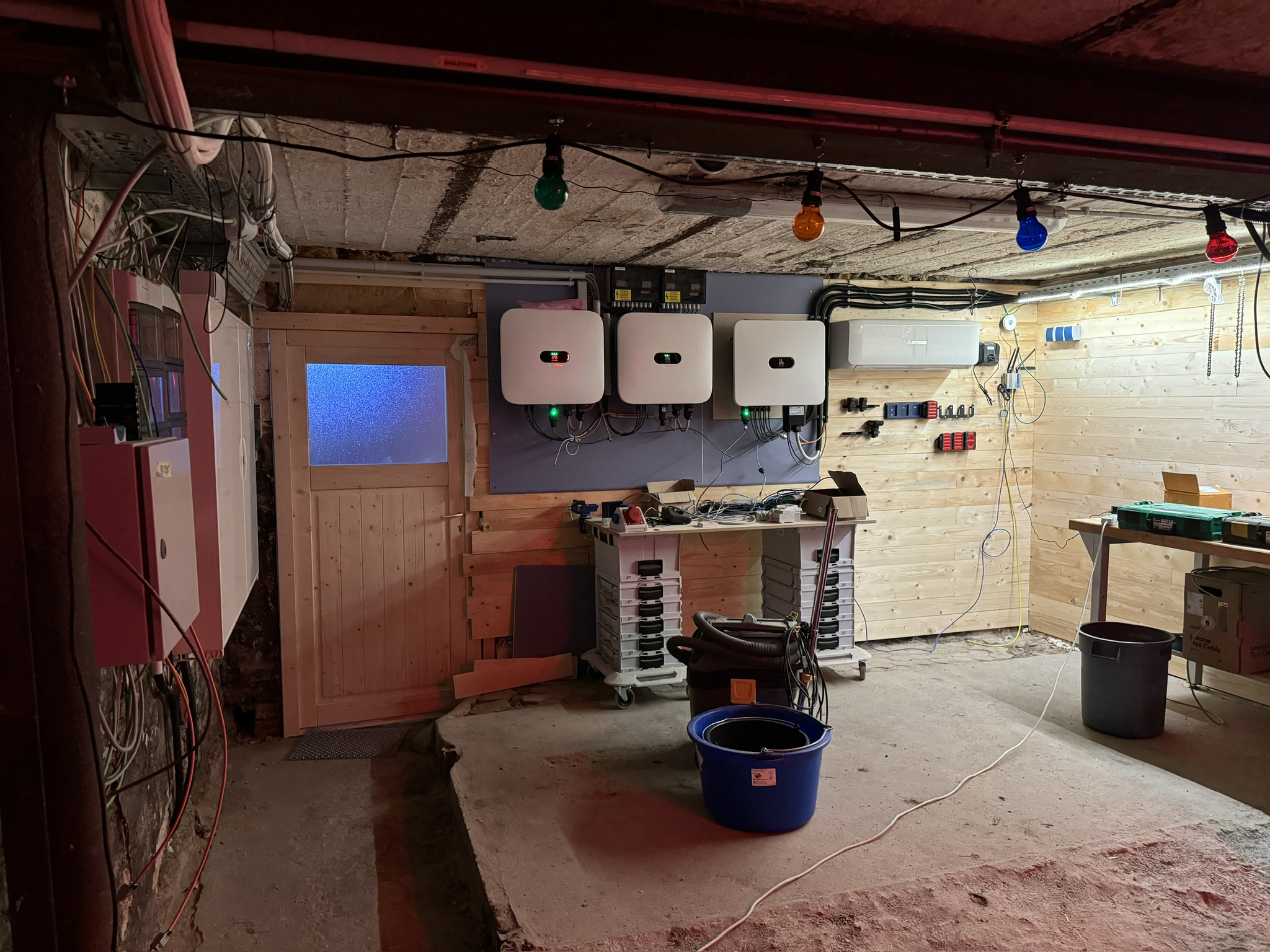




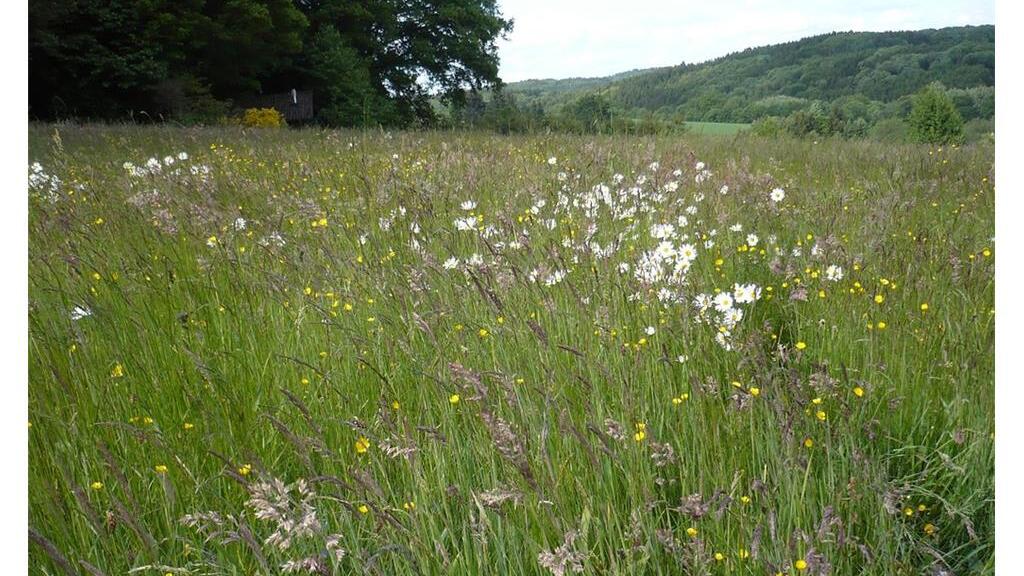
The 230 V power just is connected to the mains.
Up to 800 W rated inverter power you don’t need a permit under current german law.
If I do not use the power in my house it will just flow back into the electrical grid.
For EV charging this shed produces not enough power. Charging the Twizy would need 3 days with optimal sun. Charging the Tesla about four weeks.
But there is a separate 10500 Wp solar array on the house and an energy management system which controls everything charging. See OpenWB on how this can be done.